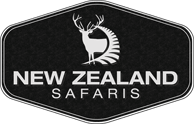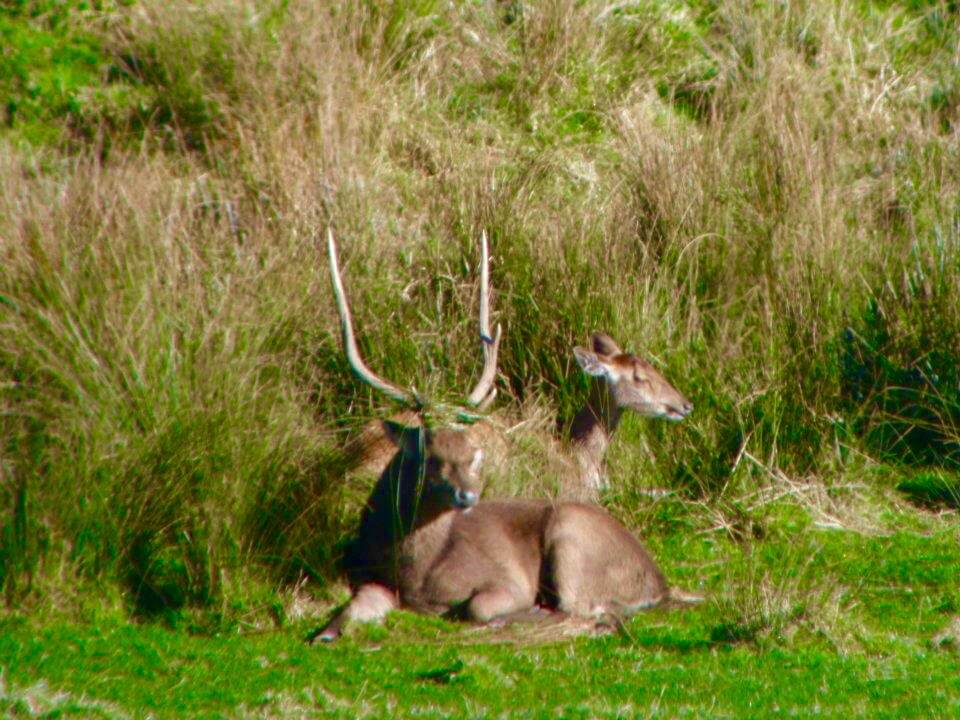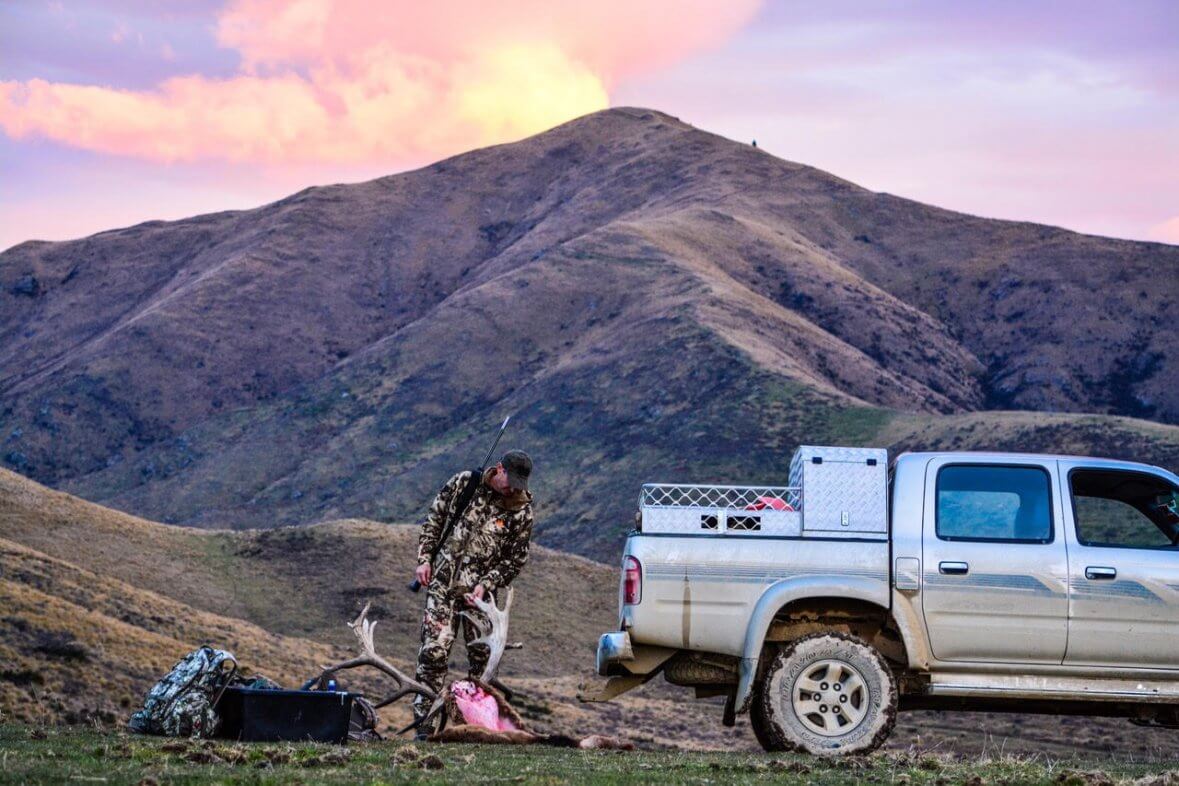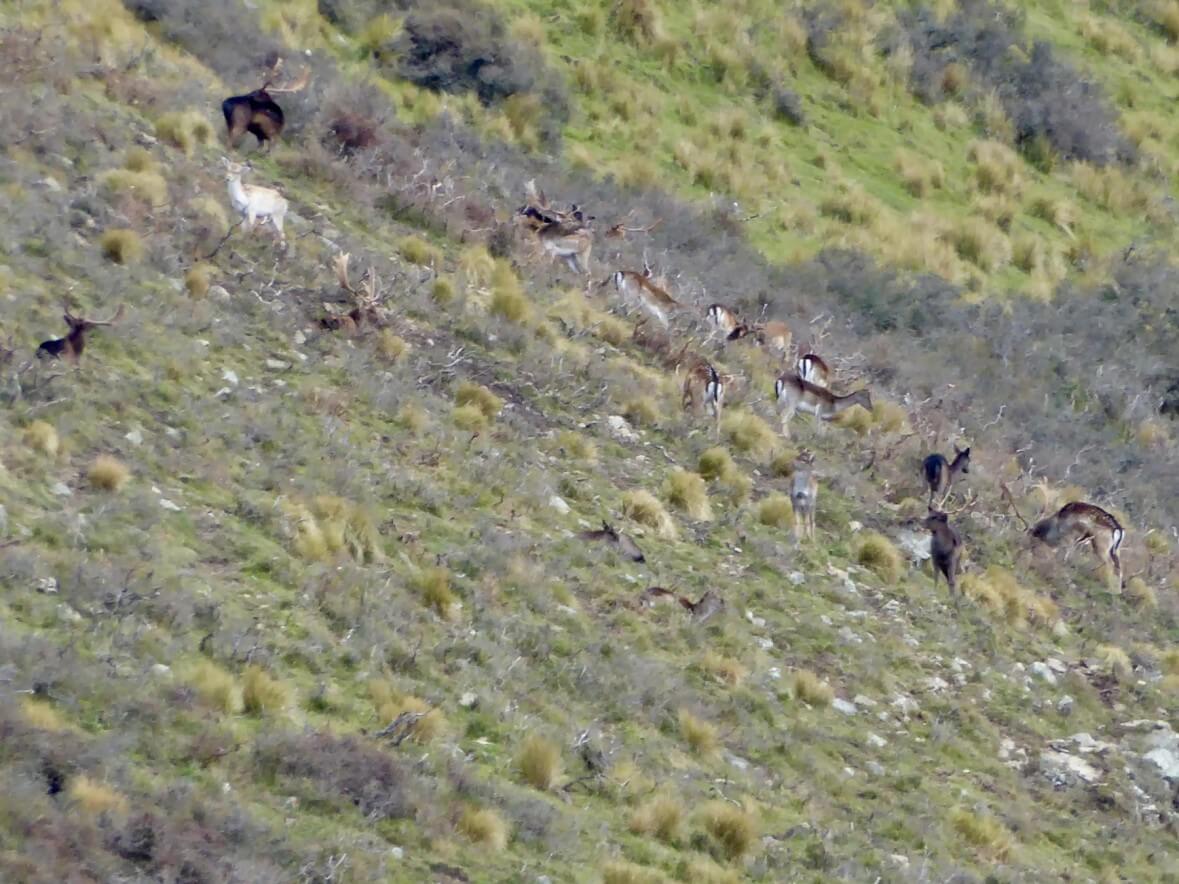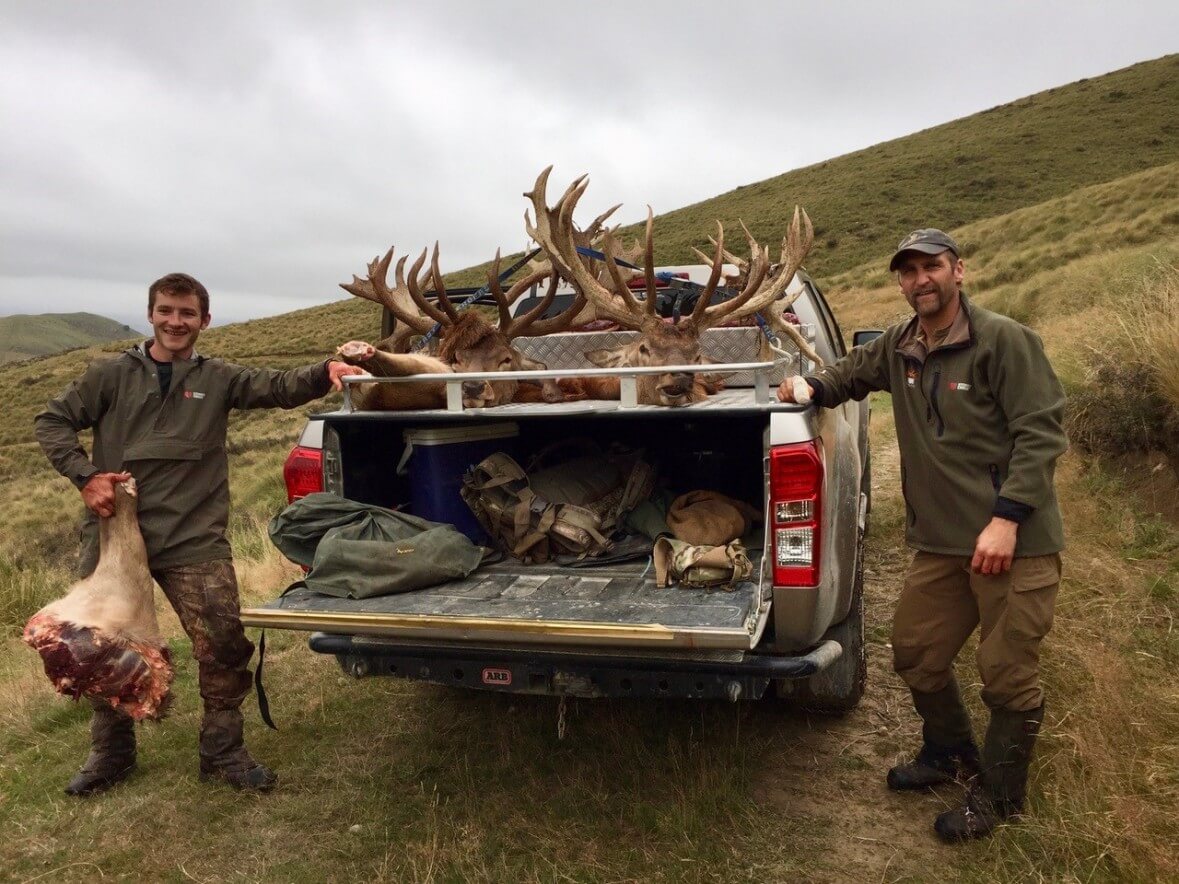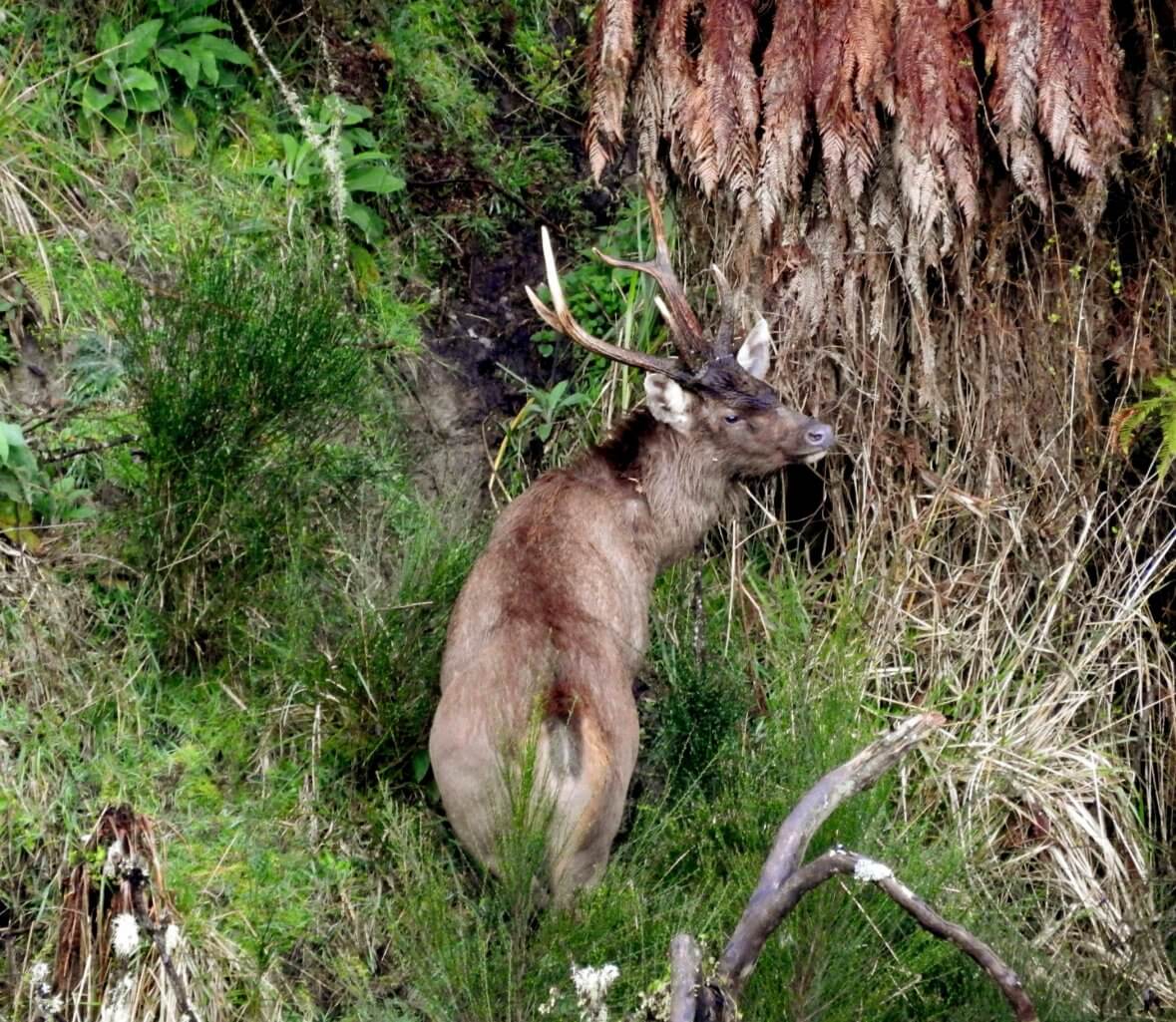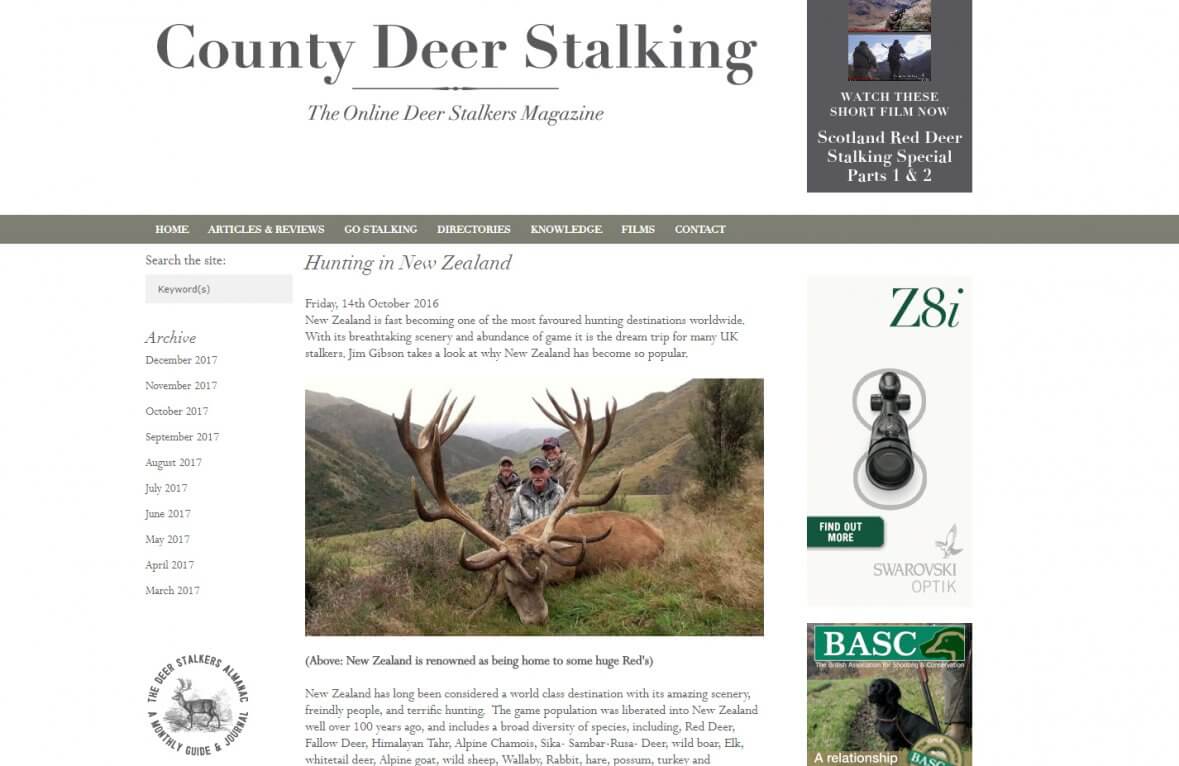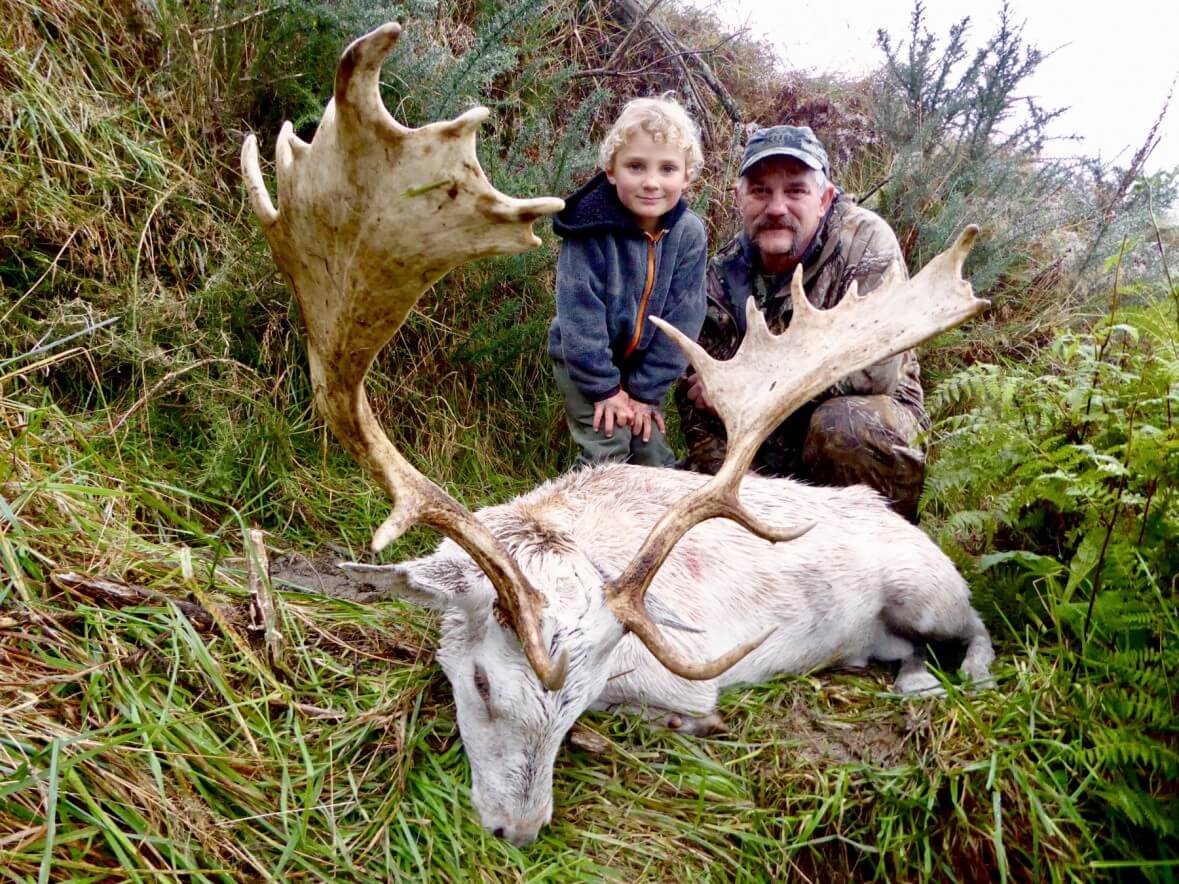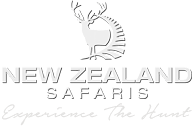A rusa deer (Rusa timorensis) is one of the most elusive deer to be found in the New Zealand bush. New Zealand Safaris offers rusa deer hunts in both New Zealand and Australia.
Description
Size: Male height is about 1060 mm at the shoulder and weighing 122 kg, females 810 mm shoulder height and weighing up to 70 kg.
Colour: Males dark reddish-brown summer coat changing to dark greyish-brown in autumn. Females pale yellowish-red in summer and greyish-red in winter. Chin, throat and underparts cream.
Antlers: Present in males only. Antlers cast December-January and new growth complete by May. Normally 3 points on each antler, with the inner tine longer than the outer and nearly parallel with the inner tine of the other antler.
Social behaviour: Wary and semi-nocturnal rusa spend much of the day holed up in thick vegetation cover. They live in small groups and have relatively small home ranges. Prefer mixed grass areas for feeding and often utilise adjacent farm paddocks and crops.
Reproduction: Rut commences mid-July and continues into August.
Males collect a harem of females. The actual male rusa’s roar could be described as a short husky growl rather than the drawn out bellow of a red stag. Males roar infrequently perhaps only 2-3 times a day with concentrated activity early morning and late afternoon.
Males wallow and mark their territory with scrapes. While servicing these scrapes, males leave an unmistakeable scent that could be described as a pungent sickly sweet aroma.
Gestation period: About 240 days.
Birthing: Fawns are born March – April. Twins rare.
Nomenclature: Male = stag. Female = hind. Young = fawn/calf.
Hunting Tips:
| Characteristics/behaviour | Hunting response |
|---|---|
| Rusa are a medium sized deer. | Rifle ccalibre of .270and above are suitable for shooting rusa deer. |
| Occupy areas of thick cover with warm aspect and adjacent to open grazing areas. | Seek out suitable habitat and either:Hunt very slowly, stopping often to look around as rusa are often very hard to see amongst dense vegetation.Stake out a warm clearing (especially in winter) and wait for a deer to come to feed, often involves a long shot. (Probably the more successful method.) |
| Semi-nocturnal and active mainly early morning and late afternoon, lay up in thick cover during much of the day. | Hunt or be at the stake out location early morning or late afternoon when deer likely to be more active. Rusa Stags rut from June-October. |
| Rusa are rarely encountered on their own. | When a rusa is sighted be alert as others may be in close proximity but hidden from view. |
| Sign of rusa includes a network of well used trails and tunnels connecting bedding sites with feeding areas. | Stake out areas where recently used tracking systems are found accessing feeding areas. |
Like many of the deer species the lungs and heart are in the lower quarter of the Red Stag, approximately the size of a dinner plate.
For Red Stag shot placement judging half way going from the top of the shoulder and bottom of the chest you should aim slightly under half way. Being more of a medium skinned animal Red Stags like all animals can be extremely tough during the rut to take down so use appropriate calibers again that deliver good kinetic energy and you can handle to shoot accurately. Muzzle breaks or preferably suppressors are excellent options if you’re worried about recoil and the latter noise. All of our New Zealand Safaris rifles are equipped with suppressors.
A suitable range between 80-250 yards and take time to make the shot. Bow hunting on these guys will get your heart pumping with average shots at approximately 40 yards where we can use cover, calling, and blinds to get in close.
When discussing red stag shot placement, we are typically aiming for double lung, braking both shoulders and potentially also hitting heart which would be the ideal shot. As every hunter knows animals do not always stand square on at 90% and waiting for the perfect alignment can mean not getting a shot.
First and foremost if you are not confident with taking a shot don’t take it. It’s not worth pointing your rifle and shooting or ball parking it. Preparation before the shot and knowing where the vitals are is important in making sure you are taking an ethical shot. With a steady rest you can make those quartering shots if need be. Stags will often turn to face you if they have been alerted or winded you for a brief moment, it may be your best opportunity. Preparation really equals opportunity.
When lining up red stag shot placement it’s always important to think about bullet exit over entry as this is where maximum damage occurs so look at where the off set leg is positioned and body. Front on low down and allow for the exit. Another fatal shot that can be taken if you are very confident and your rifle is a tack driver is at the base of the neck and the spine.
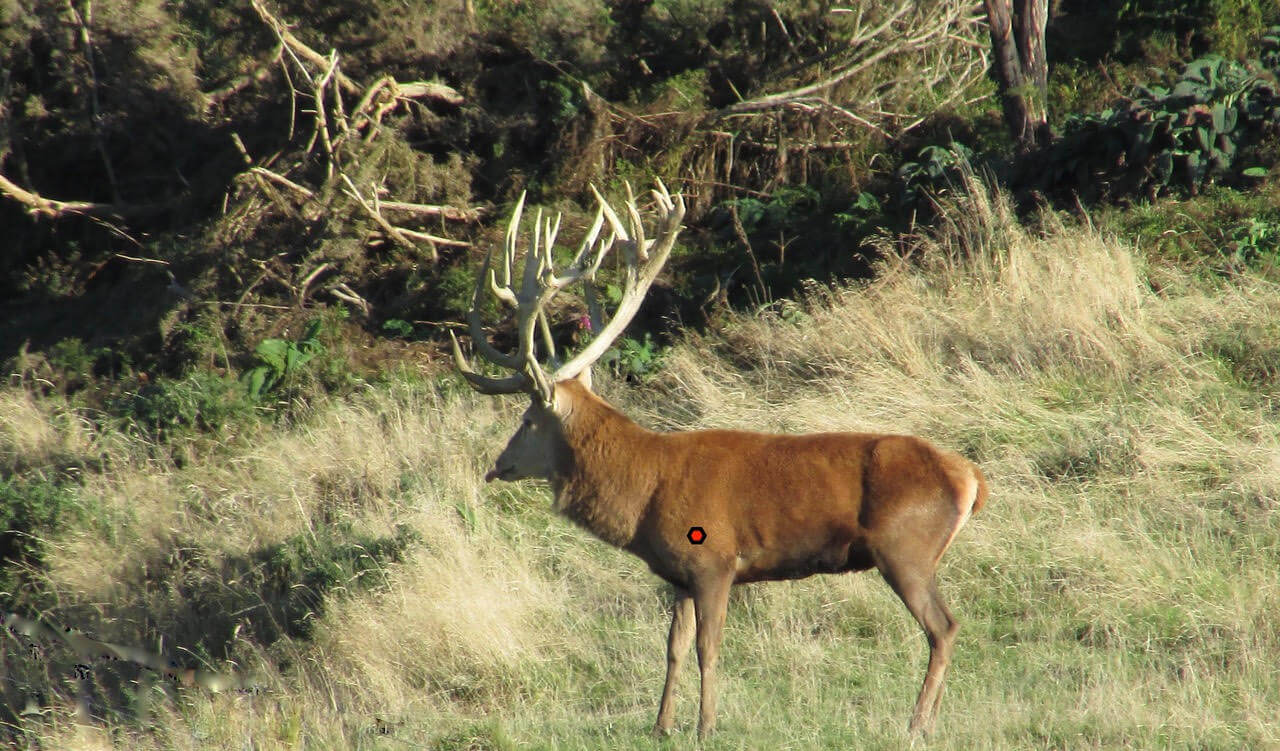
There are 11 big game New Zealand animals to hunt, 4 varmints, and a variety of birds including turkey and ducks. Due to a lack of management on government land, the trophy animals are typically much larger and older on private land because of the lack of hunting pressure, improved genetics and food quality.
Fallow bucks are in full rut (croak) now in April. Deer hunting for fallow bucks is different than any other deer species in the world. The fallow bucks will have their own rut pad or a communal one and the females or does will come into these pads to get mated.
There are many differing opinions from hunters and Outfitters regarding taking meat back into the United States from hunted animals. There are a 2 steps you must follow but basically yes you can do it without any problems.
(more…)
Last December, I was interviewed by the crew at the Sportsman of Colorado Radio Show in the lead up to the International Sportsman’s Expo. Have a listen! (more…)
Free Range Sambar in New Zealand are found only in the central North Island of the country. Originally from Sri Lanka they are much bigger in body size than the Red Deer but antlers formation is typically heavy 3×3 in points. (more…)
“New Zealand is fast becoming one of the most favoured hunting destinations worldwide. With its breathtaking scenery and abundance of game it is the dream trip for many UK stalkers. Jim Gibson takes a look at why New Zealand has become so popular.”
As we come to the towards the end of April the Red Stag rut is slowing down, but the Fallow Bucks and Sika Stags are still calling and fighting – both being very vocal and aggressive for the dominance of the females. (more…)
